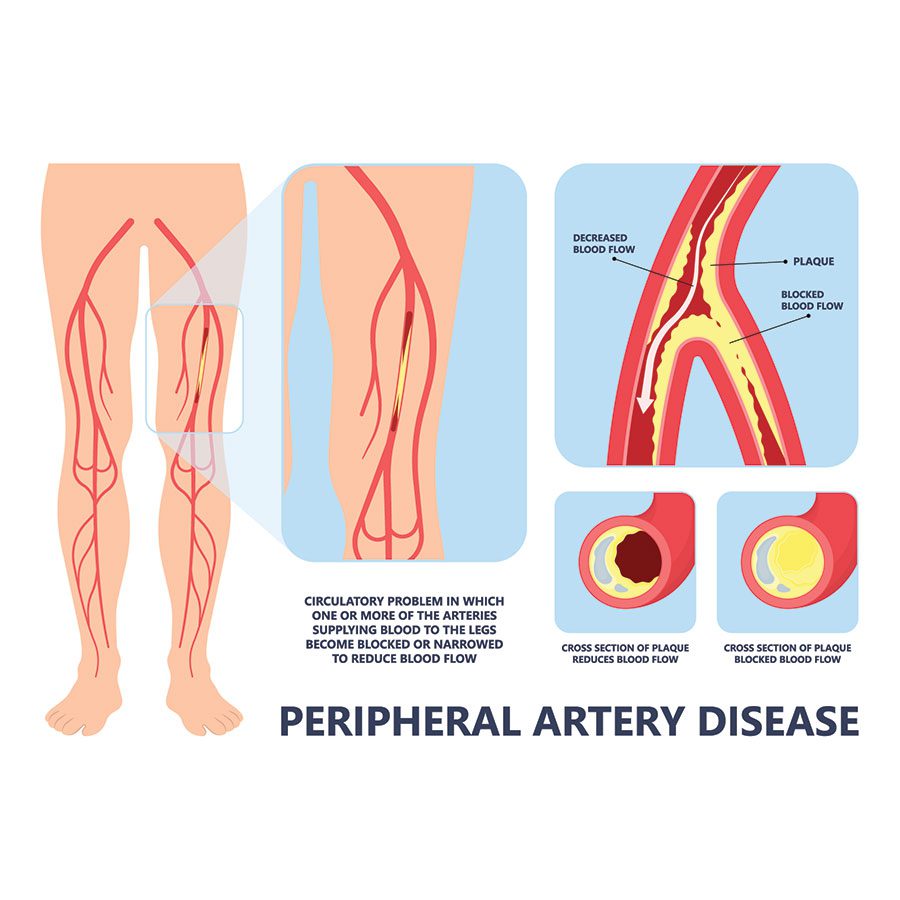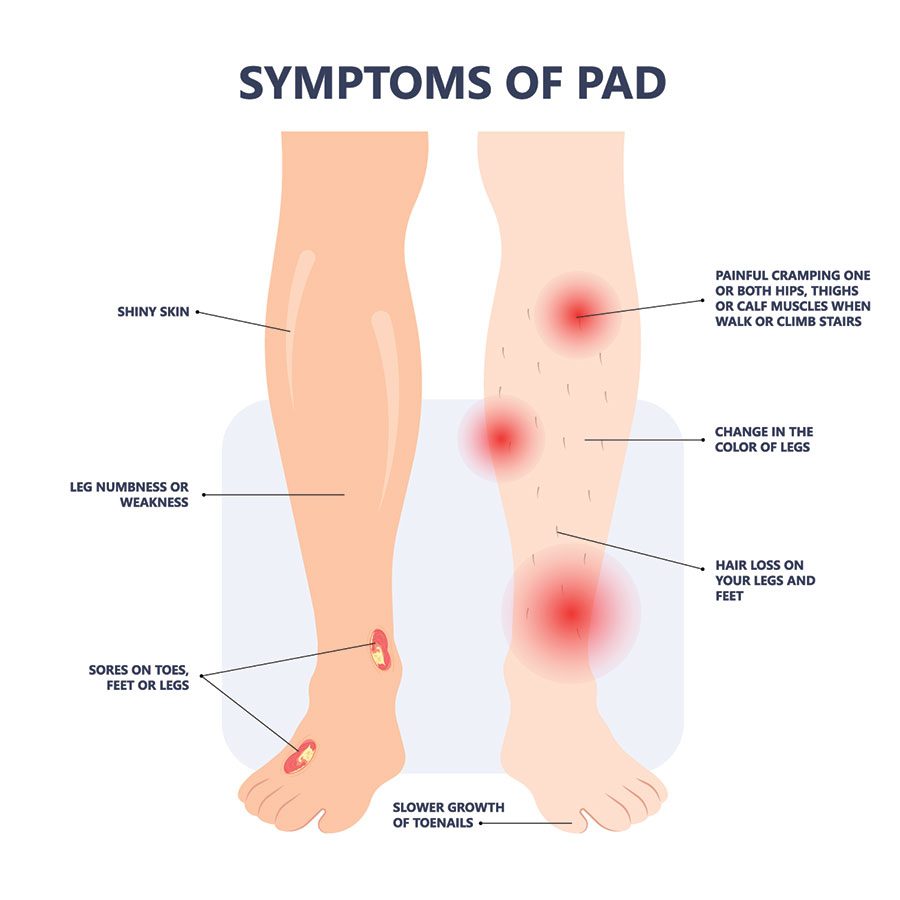
Peripheral Artery Disease (PAD) is a common circulatory problem in which narrowed arteries reduce blood flow to your limbs.
It is typically a result of aging and numerous risk factors that result in the build-up of plaque inside the lining of your blood vessels that causes them to become narrow.
Peripheral Artery Disease (PAD) is caused by a build-up of plaque (fatty deposits and cholesterol) on the walls of the arteries which is called atherosclerosis. Arteries can become so narrow over time that the blood flow bringing oxygen to the muscles, organs and tissue is restricted. If plaque breaks off and gets into the bloodstream, clots can form, causing further problems. PAD is considered a risk factor for heart attack and stroke.


While PAD is known for affecting the blood vessels to the legs, it can affect nearly any artery in the body, including the abdomen, brain, intestines, kidneys or pelvis.
PAD is typically asymptomatic. If the narrowing becomes bad enough, one can have difficulty walking—resulting in significant cramping pain that improves after resting. This can limit a person’s ability to exercise or in some cases ability to work. In more severe cases, it can also result in wounds (ulcers) that do not heal. These are typically in the feet, and less commonly in hands.

A medical history and physical exam will be conducted by your interventional radiologist.
Tests may include:

Limb preservation refers to medical care performed to give patients the best possible chance to avoid amputation from severe PAD.
Wounds that are a result of peripheral arterial disease with additional risk factors such as diabetes and kidney disease may not heal spontaneously. A non-healing wound can be at risk for infection, with the biggest concern being infection extending to the bone. In these cases the risk of minor and major amputations increases. A team effort is required to successfully treat these wounds, including a foot and ankle doctor, an interventional radiologist and a vascular surgeon.
Limb preservation centers are dedicated to saving limbs and preserving quality of life. We often receive second and third opinion requests and are proud to offer the expertise to treat the most challenging cases.
The presence of a non-healing wound is known as Critical Limb Ischemia (CLI). Wounds can appear as areas of open sore, skin infection, ulcers that don’t heal or even development of discoloration of the skin (gangrene). These scenarios are typically more urgent. During consultation your interventional radiologist will discuss options for treatment of the blood vessel disease as well as managing the wound.
While amputations are a valid life-saving treatment—they should be utilized sparingly. There are many amputations performed yearly without appropriate diagnostic or interventional work up. If your limb is at risk or an amputation has been recommended, seek out a second or even third opinion and request evaluation for an angiogram. A team approach between wound care and your vascular specialist is the key to success.

Before scheduling an appointment, you may need a referral from your physician. Once you have a referral, you may schedule an appointment by calling 703.698.4475 Monday through Friday, 7am to 5pm.
Fairfax Vascular Center is one of the largest and long-established interventional radiology practices servicing the DC metropolitan area for over 15 years.
Our highly trained and experienced radiology subspecialists have helped thousands of patients with PAD and limb salvage in a comprehensive team approach.
Our physicians are available 24/7 to ensure you are well taken care of from the time of consultation through your treatment and follow up.
Fairfax Vascular Center is part of Fairfax Radiology Centers, the largest and oldest diagnostic radiology group in the metro DC and surrounding region, allowing us to provide our patients with leading edge imaging technologies and the most experienced diagnostic and Interventional Radiologists with subspecialty training.
We firmly believe that multidisciplinary care is in the best interest of our patients and closely partner with our podiatry, wound care and vascular surgery teams to make sure that your care is in the best hands and you gain the best possible outcome.